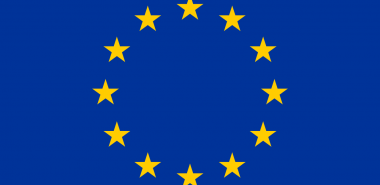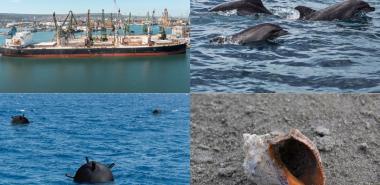EU strategic approach to the Black Sea region
The Black Sea region plays a strategic role for global security, international trade, energy and food security. Find out more about the EU's Black Sea strategy on this page.
In Focus

The EU’s strategic approach to the Black Sea
The Black Sea region
The Black Sea region is a critical connector between Europe, the Southern Caucasus, Central Asia and the Eastern Mediterranean. It plays a strategic role for global security, international trade, energy and food security.
The Black Sea region is, furthermore, a dynamic hub of innovation and culture. The environmental challenges of the Black Sea equally demand stronger regional cooperation – to protect marine ecosystems, develop the blue economy, and increase climate resilience among coastal communities.
The critical importance of the Black Sea region is underscored by Russia's war of aggression against Ukraine, which has shaken the foundations of the rules-based international order and exposed the vulnerabilities of European and regional security. This context requires swiftly addressing hybrid threats, such as cyber-attacks, disinformation campaigns and foreign information manipulation and interference (FIMI). It calls for a robust, coordinated EU response.
The EU strategic approach to the Black Sea region proposes a comprehensive approach, supporting the resilience and security of a region that is vital to Europe's stability and prosperity. The EU strategic approach to the Black Sea region is key in EU support to Ukraine, to its reconstruction and relaunched economy, to its security and resilience, including for enabling its security guarantees.
EU strategic approach to the Black Sea region
The EU strategic approach to the Black Sea region proposes a comprehensive policy framework with security and stability as a basis for inclusive and sustainable growth, as well as for improved connectivity for the EU and its partners, up to Central Asia.
With several countries of the region on the EU accession path, the EU strategic approach to the Black Sea region is putting forward proposals for resilience, stability and security of the region, taking forward regional cooperation and engagement along three main pillars:
- Enhancing security, stability, and resilience;
- Fostering sustainable growth and prosperity;
- Promoting environmental protection, climate change resilience and preparedness.
The strategy highlights three flagship initiatives related to:
- Black Sea Maritime Security, including establishing a Black Sea Maritime Security Hub
- Connectivity Agenda
- Preparedness of coastal communities and blue economy sectors
Security in the Black Sea region
Security in the Black Sea and notably maritime security is essential for all areas of cooperation in the region, including for trade, transport, blue economy, maritime activities. It is critical for freedom of navigation and safety of shipping that are essential for the development of energy, digital and transport connectivity corridors. Therefore, the new element of the EU strategic approach to the Black Sea region is a strong security angle embedded in all areas of cooperation.
The EU and its partners are affected notably by the Russian military build-up, the shadow fleet of oil tankers and the risks posed by drifting mines that threaten regional trade, transport and the marine environment.
The Black Sea region is the prime target for hybrid actions, including cyber and foreign information manipulation, emerging and disruptive technologies, interference in elections.
The security pillar of the EU strategic approach to the Black Sea region includes four clusters of measures and introduces the proposal to establish a Black Sea Maritime Security Hub under Flagship1: Black Sea Maritime Security.
Four clusters of key actions under the security pillar:
- Encouraging regional cooperation on demining, maritime security and situational awareness: This cluster envisages actions set to help enhance maritime situational awareness and information exchange in real time on the Black Sea, strengthen maritime safety and security, the protection of critical maritime infrastructure (CMI), and the marine environment, through real-time monitoring from space to seabed, and early warning for potential threats and malicious activities. It includes also the broadening of coast-guard cooperation among EU and non-EU littoral States. Concrete proposals on information exchange under the European Maritime Safety Agency (EMSA) and on CMI protection are also included, with the use of new technologies such as underwater sensors, unmanned/remotely piloted vessels and surveillance drones programmes (air, surface, underwater). This work will build on a number of cooperative projects, including in PESCO and European Defence Fund frameworks.
- Enhancing military mobility and multimodal transport infrastructure: The EU will ensure that sufficient ports are “military mobility-enabled" in the EU, including at the Black Sea. Ukrainian ports could also benefit from the projected extension of military mobility corridors into Ukraine. The ability to rapidly move military equipment to Ukraine will serve as additional security guarantees to deter against future aggression and to protect critical infrastructure, including economic and energy platforms.
- Countering hybrid threats: The European Union aims to boost cooperation to combat cyberattacks, disinformation, and other hostile actions. The EU will invest in Artificial Intelligence to fight disinformation, promote media literacy, and enhance fact-checker networks. EU support to enhance relevant capacity and resilience across the region will build on existing frameworks, including the Hybrid Risk Survey, and rapid response tools, such as the EU Hybrid Rapid Response Teams. The EU will build also on dedicated CSDP Missions in the region, such as EUPM Moldova.
- Fighting against organised crime and trafficking: Key actions include the participation of partner countries in the European Multidisciplinary Platform Against Criminal Threats (EMPACT) initiative and the strengthening of partnerships between law enforcement agencies in the Black Sea region and Frontex, Eurojust, Europol and CEPOL to tackle common security challenges along the Caucasus route with transit countries located in the Black Sea region.
Under Flagship1) Black Sea Maritime Security, establishing a Black Sea Maritime Security Hub will help strengthen the region’s maritime security in the short and long term. The Hub will seek to leverage the EU and Black Sea states’ contributions for more maritime security and safety, protect critical maritime infrastructure and the marine environment. It proposes four key actions.
Four key areas of action are envisaged under a Black Sea Maritime Security Hub, focused on: (i) enhanced maritime security; (ii) protection of critical maritime infrastructure (CMI); (iii) developing maritime assets and capabilities of the EU MS to monitor and protect CMI; (iv) broadening coast-guard cooperation among EU and non-EU littoral states.
The hub will help enhance maritime security through real-time monitoring, exchange of information and maritime situational awareness. It will also help protect critical maritime infrastructure. Offshore installations or submarine cables must be protected. New technology can be employed, such as underwater sensors, remotely piloted vessels and surveillance drones programmes.
The hub will support work to develop maritime assets and capabilities to monitor and protect critical maritime infrastructure. In addition, under the hub, EU and the willing MS will be looking into ways to broaden coast-guard cooperation among EU and non-EU littoral states modelled on the Mediterranean Coast Guard Functions.
Flagship 2) Connectivity Agenda highlights the urgency to diversify transport corridors (through the TEN-T corridors), to develop digital and energy connectivity networks and to reduce critical dependencies.
Flagship 3) Environmental and Blue economy initiatives is focusing on the preparedness and resilience of blue economy sectors and coastal communities, on climate change adaptation and on addressing various environmental threats.
The EU strategic approach to the Black Sea region builds on the EU Black Sea Synergy link (see below), which has been the EU policy framework for the region since 2007. Many of the work strands (maritime affairs, fisheries, environmental protection, blue economy, education and research, etc.), remain relevant for the EU strategic approach to the Black Sea region and will be adjusted to the new geopolitical and security context.
In addition to the Synergy, the new EU strategy adds a strong security angle, with new cooperation proposals to enhance maritime security, demining, protecting critical maritime infrastructure, developing cooperation among coast-guards and countering hybrid threats, as well as fighting organised crime and corruption in ports. These key actions are reflected under Flagship 1) Black Sea Maritime Security and notably under its Black Sea Maritime Security Hub (see above).
Synergies with other policy frameworks and initiatives are outlined in the EU strategic approach to the Black Sea region, including the Eastern Partnership, EU Strategic Compass for Security and Defence, the Revised EU Maritime security strategy and the Global Gateway, the Common Maritime Agenda for the Black Sea and its scientific pillar, the common Strategic Research and Innovation Agenda for the Black Sea.
In addition, the EU strategic approach to the Black Sea region is part of a new package of EU policy initiatives tailored to the broader new geopolitical dynamics that bring an increased focus on awareness, preparedness, resilience, security and defence. Key among them are the White Paper on Defence, the new SAFE instrument, the European Preparedness Union Strategy, the Action Plan on Cable Security, the European Ocean Pact, the EU’s security strategy/ "ProtectEU".
EU Black Sea Synergy
Launched in 2007, the Black Sea Synergy encourages a bottom-up approach to project development, identifying and supporting the needs, priorities and aims of partners in the region, and what they want to do together. The key elements of the Black Sea Synergy include building confidence, fostering regional dialogue and achieving tangible results for states and citizens in the region. A stable, secure, resilient and prosperous Black Sea region is in the direct interest of its citizens and of the EU overall.
Implementation reports of the regional cooperation initiative
Since 2007, the Black Sea Synergy (BSS) has been the EU’s regional policy framework for the Black Sea region. It aims to enhance policy coherence and further cooperation between the countries surrounding the Black Sea, providing a flexible framework for developing practical region-wide solutions.
On 3 July 2024, the EEAS and the European Commission published the fourth implementation report of the Black Sea Synergy. The Joint Staff Working Document Black Sea Synergy: 4th review of a regional cooperation initiative - period 2019-2023.
The report addresses regional and global challenges in the Black Sea region. It presents the Synergy’s successful strands of work and flagship initiatives, alongside key achievements in all areas of cooperation. This offers a solid basis in view of the European Council conclusions of 27 June 2024 inviting the Commission and the High Representative to prepare a Joint Communication on building an EU strategic approach to the Black Sea.
Despite Russia’s ongoing war against Ukraine, activities under the Black Sea Synergy have been successfully implemented in all its fields of cooperation, strengthening the interconnections among them. These fields are:
- integrated maritime policy and sustainable blue economy;
- fisheries and aquaculture;
- environmental protection and climate change;
- cross-border cooperation - Black Sea basin programme 2014-2020, (Interreg VI - B) NEXT Black Sea basin programme;
- civil society engagement, democracy and human rights;
- education, research and innovation (beyond the marine sector), culture and tourism; and
- energy and transport.
The implementation of the Synergy has also resulted in increased engagement by most of the participating countries, except Russia, in its two milestone initiatives on maritime affairs and marine research and innovation: the Common Maritime Agenda for the Black Sea and its scientific pillar, the common Strategic Research and Innovation Agenda for the Black Sea. This shows the potential of the Black Sea Synergy to facilitate cooperation and cohesion for all participating states and beyond.
The ‘EU-Ukraine Solidarity Lanes’ have proven to be a lifeline for Ukraine’s economy, showcasing flexible and proactive cooperation on the part of a number of Black Sea riparian countries.
Since 2019, the Black Sea Synergy has navigated challenges posed by the impact of the COVID-19 pandemic and Russia’s war of aggression against Ukraine. Important policy developments, such as the EU Strategic Compass for Security and Defence, the EU Maritime security strategy and the Global Gateway have supported the implementation of the Synergy. Increased synergies with other policy frameworks have been factored in, such as the Eastern Partnership, its 2020 new agenda on recovery, resilience and reform together with the flagship initiatives under its Economic and Investment Plan.
At the same time, the EU enlargement process has gained momentum and relevance for the Black Sea region with the decision to open accession negotiations with Ukraine and the Republic of Moldova., and to grant Georgia the status of a candidate country, contingent on certain reforms.
The report points that the consequences of Russia’s war of aggression against Ukraine, undermining the rules-based international order and security in the Black Sea, Europe and beyond, have added to the challenges and threats experienced already by the region. The war has resulted in increased economic, commercial, and environmental challenges, with war-related pollution and disrupted navigation due to floating sea mines and naval warfare.
Additionally, Russia’s weaponization of food and energy is jeopardizing global food security. It comes in a package with disinformation and information manipulation, malign activities and hybrid warfare. This report confirms the wide range of EU activities in the Black Sea region that have sought to address existing and new challenges in the region.
The EU’s approach to the regional cooperation in the Black Sea continues to be grounded in respect for the norms and principles of international law, especially sovereignty, independence and territorial integrity within internationally recognised borders, as well as for the United Nations Convention on the Law of the Sea. Therefore, as part of the EU’s response to Russia’s war of aggression against Ukraine, Russia’s participation in the Black Sea Synergy has been suspended and the same goes for all forms of cooperation with Russian public stakeholders.
Building on the Black Sea Synergy, a more strategic approach to the Black Sea will help unlock the economic, democratic and cooperative potential of the region in a secure and stable environment. Black Sea regional cooperation will be key to deal with transnational challenges such as demining and pollution.
On 5 March 2019, the EEAS and the European Commission published the third implementation report of the Black Sea Synergy. The Joint Staff Working Document 'Black Sea Synergy: review of a regional cooperation initiative – period 2015-2018' underlining results, drawing lessons learned and flagging key aspects, further informing the developments of this initiative. It confirmed the practical utility of the Black Sea Synergy initiative, its positive contribution to regional cooperation and its yet untapped potential.
The report outlined positive developments in the areas of blue growth, maritime policy, marine research and innovation, fisheries, environmental protection and climate change, cross-border cooperation and civil society engagement. Areas of cooperation such as education, science and innovation (beyond marine), culture and tourism, energy and transport, albeit less developed, receive interest from partners in the region. In particular, the region has potential for interconnectivity both within the EU and between continents, considering the "bridging role of the Black Sea basin" mentioned in the 2018 EU Communication on ‘Connecting Europe and Asia — Building Blocks for an EU Strategy'. Other fields could offer opportunities for future cooperation, such as social affairs, employment, and trade.
The 2019 Joint Staff Working Document reviewed links of the Black Sea Synergy with other EU strategies and policies relevant for the Black Sea region, such as the EU Strategy for Danube Region and the EU Communication on ‘Connecting Europe and Asia — Building Blocks for an EU Strategy'. It also reflects on the cooperation with regional and international organisations active in the Black Sea, particularly with the Organisation of the Black Sea Economic Cooperation (BSEC) and the General Fisheries Commission for the Mediterranean (GFCM).
In 2015, the EEAS and the European Commission published the second implementation report of the Black Sea Synergy. The Joint Staff Working Document 'Black Sea Synergy: review of a regional cooperation initiative', covering the 2009-2014 period, provided a snapshot of the progress achieved in the main areas of cooperation in the Black Sea region. This review referred to strengthening regional cooperation via concrete projects and making the best possible use of the wide range of EU's tools in order to bring added value to the citizens of the region while ensuring environmental sustainability.
The first review on the Black Sea Synergy, the Communication from the Commission to the Council and the European Parliament, entitled ‘Report on the First Year of Implementation of the Black Sea Synergy’ was published in June 2008.



